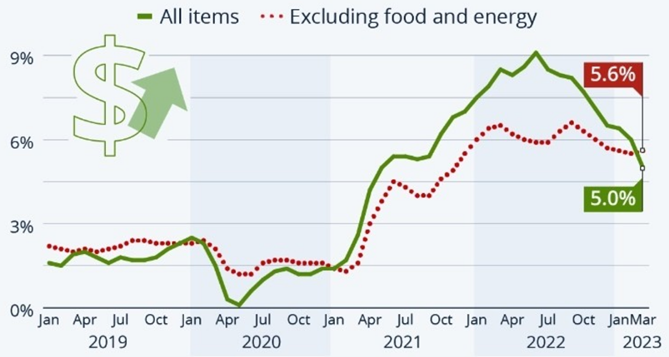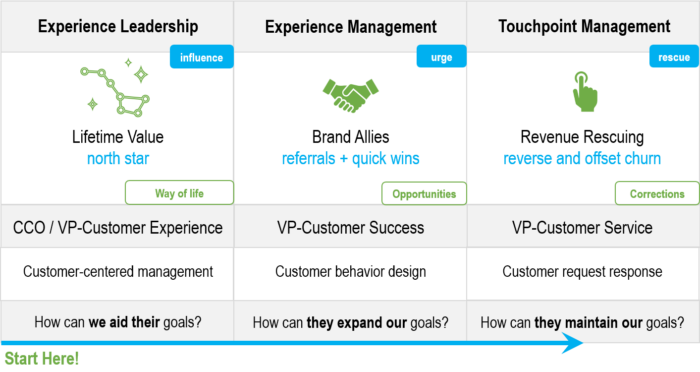 Employee experience (EX) goes hand-in-hand with customer experience (CX). It’s like the chicken and the egg: which comes first? Neither. Both rely upon one another for existence.
Employee experience (EX) goes hand-in-hand with customer experience (CX). It’s like the chicken and the egg: which comes first? Neither. Both rely upon one another for existence.
EX and CX are immature fields of practice. That’s true in every industry and nation. We’re still learning and correcting inaccurate assumptions: How do CX and EX fit together? What leads to what? How can we manage these vital areas more wisely for stronger results?
I discovered many things nobody had talked about while I was writing and speaking about EX and CX in 2023. This article summarizes these discoveries.
This is a 4-part series of 24 things we know in 2024, that we didn’t know a year earlier. Discoveries 1-4 are described in part 1: Customer Experience Value. Discoveries 5-9 are summarized in part 2: Customer Experience Metrics. Discoveries 16-24 will be explained in part 4 for CX Strategy.
Now, for employee experience’s reciprocal effects on customer experience, here are discoveries 10-15.
Employee Experience & Customer Experience
10. CX=EX
Everything noble about customer experience is a lesson for employee experience, and vice versa.
This goes way beyond empathy for customer-facing employees. Customers experience the collective outputs of every department in your company. Accordingly, all employees affect customer experience.
Shockingly, 58% to 80% of employees are NOT very motivated, as reported in the Employee Motivation and Commitment Index (September 2023). This means poor employee experience is causing poor customer experience.

This horrible motivation trend is costing you dearly, with ongoing consequences to the economy (interest rates, etc.) and customer experience.
Customers are suffering the most. Inflation, skimpflation, and shrinkflation are the post-pandemic theme for the majority of products and services.
I say customers are suffering more than employees, because every person in the world is a customer, while employees are a subset of the world population. And poorly-motivated employees are driving lower value to customers, not vice versa.
You may point out that inflation is on a downward trend. However, prices are quite a bit higher than 2019. And inflation statistics do not account for lower quality and smaller sizes we all see now.
You may say your surveys show good CX despite the trends shown above. Keep in mind that your surveys are not asking how well customers are doing now versus how well they were doing in 2019.
Be creative to never reduce value to the hands that feed you: customers and employees. Always increase value to them, just as you expect ongoing increases in value to investors!
When you reduce value to employees and customers, you’re robbing investors of the gains you could and should be generating for them.
The CXM team holds the keys to reversing this, due to their analytical and operational strengths. Don’t rely on Human Resources to manage employee experience. The EX fiasco of low motivation, quiet quitting, and angst at every managerial level is evidence that 2010s EX methods are grossly insufficient for today. HR strengths are not in market research, human-centered design, nor Lean/Six Sigma to drive urgent, enduring EX change. Your CXM team requires these strengths for enduring CX ROI.
The degree that your company is centered on customers’ well-being determines the degree of smoothness or chaos for employees. When the CXM team leads EX, then everything lines up. Customers pay for salaries, budgets, and profit sharing. As such, customers’ well-being is a perfect rallying point for EX. Customers’ goals provide purpose and context for employees.
So, first, discover the top 3 themes your customers are pursuing with your brand. Then, shape employees’ capabilities to deliver those 3 themes with no gaps between what’s promised and delivered.
11. Ask about them, instead of asking about your brand
Post-pandemic, there is a hunger for shared values, mutual respect, trust, and value.
- How much do you know about your employees’ expectations of these 4 hungers?
- How much do you know about your customers’ expectations of these 4 hungers?
When CX and EX survey questions are about you, then response rates are a battle, and their comments may be limited.
Alternatively, when you explore their world — their motivations and limitations and aspirations — you’ll be far wiser. Replace self-centric EX and CX questions, such as:
- “How well do you support our corporate values” — ask instead: “How well is our company supporting your values”.
- “How likely are you to recommend our brand” — ask instead: “How well are we contributing to your goals”.
- “How knowledgeable is X” — ask instead: “How informative is X”.
Always ask in their way. That’s employee-centric and customer-centric. You can infer their answer to the first phrasing from their more accurate answer to the second phrasing above.
12. Urgency to solve root causes is pivotal to better EX and CX
Emphasize walking the talk companywide to improve both customer experience and employee experience.
A) What is your cycle time from collecting insights to analyzing, presenting, and then acting on the findings? Is it more than one calendar quarter? If so, that’s too long. Today’s low motivation trends are an outcry to abandon laissez-faire actioning.
B) What percentage of actions address root causes? If managers aren’t drilling down to the 5th why behind the symptoms revealed in CX/EX feedback, then they’re putting bandages on a disease. It’s vital to banish lipstick-on-a-pig actioning for both EX and CX.
True story: To make things happen faster — and with more careful thought, for enduring results — my CX team moved our data collection to the quarter prior to our strategic planning cycle. In that in-between quarter, my CX team rapidly conducted actioning workshops with every P&L and support function. In this way, changes happened quickly with ongoing momentum, because everything was fresh and connected to strategic plans.
13. Speak executives’ language instead of CX/EX lingo
When reporting CX insights and plans across your firm, focus on what each audience should do about your report.
It’s unnecessary for them to learn the NPS equation or anything else about CX/EX jargon. Your CX team relies on them to get things right consistently for customers. So, the CX team should learn each department’s jargon and pressures, and tailor CX reports to them.
Just discuss with them how they can close gaps firstly, and act on opportunities secondly. CX ROI depends on making internal changes that increase value. Value is two-sided: easier to do business with you (remove difficulties) and getting more for what’s given.
Phrase CX gains as contributors to financial ratios. Always connect customer outcomes to business outcomes, and vice versa.
14. Facilitate the 6 A’s of CX/EX success.
Ask, Absorb, Adopt, Apply, Account, Applaud
It doesn’t make sense to ask customers for inputs, do nothing about their feedback, and then ask them to engage with your brand. Customers already paid fair market value for what they got, so you need to make it worthwhile for them to strengthen their relationship with you. Employees’ whole existence (salaries, budgets, profits) relies on customers choosing your brand.
Accordingly, employees must engage in Absorbing the findings from what you Asked customers. Absorb means employees stand in customers’ shoes and see the world as customers see it.
Next, employees must Adopt responsibility and urgency to improve customers’ world. This leads to Applying what was learned to a root cause action plan.
Finally, you should engage employees in joint decisions about how to drive Accountability for the action plan, and how to Applaud progress and completion.
15. CXM is a functional area, not a “program”
Is customer value alignment less important than information technology or engineering? Of course not. We don’t call those areas of your company “a program”. They’re functional areas.
Follow the precedent of IT and HR. Sixty years ago, IT was “data processing” and HR was “personnel relations”. In those days, these “programs” were standalone efforts by specialists. That model for IT and HR is extremely outdated, as your company’s needs are much more than that.
Today, every employee has an IT responsibility and an HR responsibility. All employees must proactively manage their effect on information security, diversity and inclusion, performance reviews, and so on.
Likewise, for CX and EX, all employees must proactively manage their effect on customers and employees. Your company’s needs are much more than siloed CX programs.
To reverse the trends discussed above, it’s urgent for your CX leader to facilitate companywide employee engagement in driving higher EX and CX value.
This is Part 3 of a 4-article series: 2024 CX is Smarter for:
1. Customer Experience Value
2. Customer Experience Metrics
3. Customer Experience = Employee Experience
4. Customer Experience Strategy
This article is an expanded revision of the original LinkedIn article: “23 Ways CXM is Smarter Now (ICYMI)“.






I’ve enjoyed this article series and appreciated how these insights continue to build on each other…highlighting the value and strategic opportunity of CXM. You note CX is an immature field of practice, so I presume companies experience varying levels of adoption and maturity. I would be interested to hear from others that have had success in busting the silo mentality and building CXM as a functional area versus a program. Key takeaways or insights on what worked or what would possibly do differently next time?